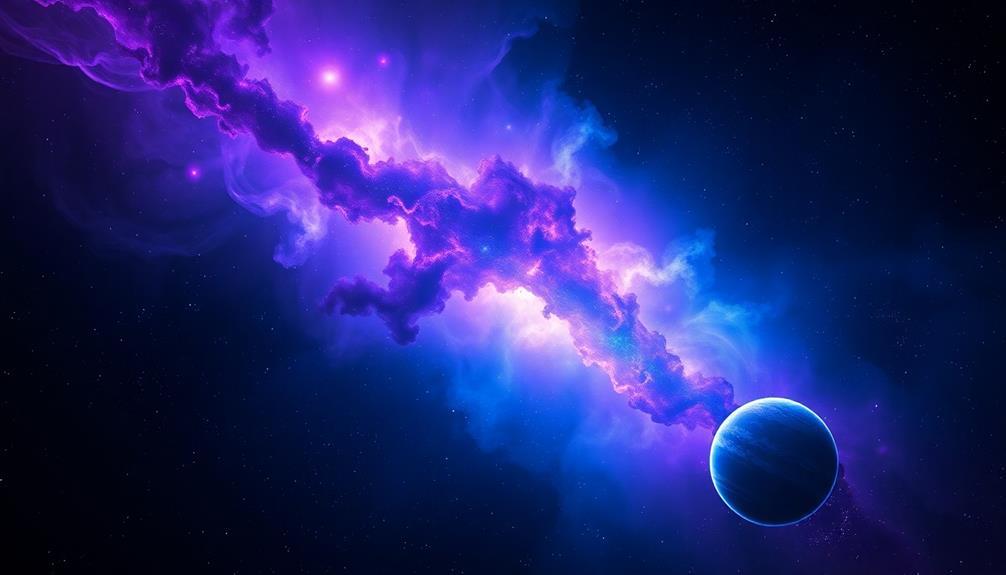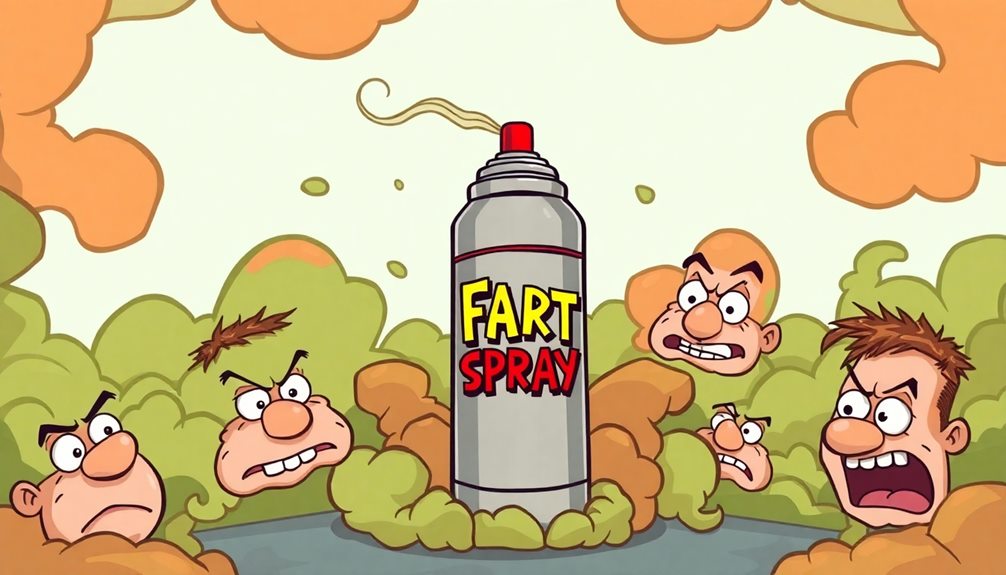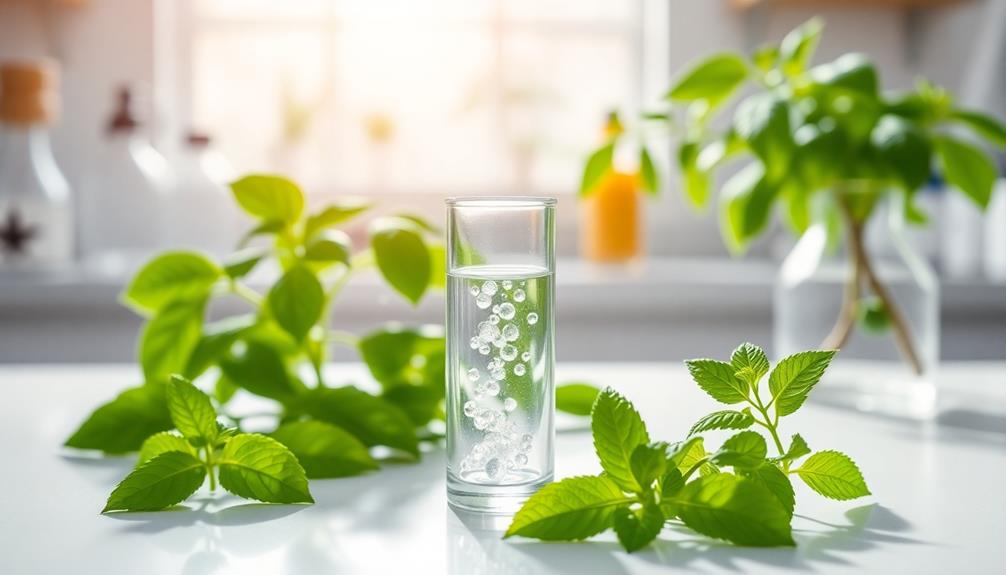When astronauts come back from spacewalks, they say outer space has some wild smells! You might think of burnt steak, a hint of ozone, or even gunpowder. These scents come from chemical reactions in space, like atomic oxygen mixing with other particles. Some areas even smell like rotten eggs or pickles due to gases from comets. Each place in space offers a unique olfactory adventure! Imagine how cool it would be to sniff these smells! It's all part of the amazing adventure of exploring the universe, and there's so much more to discover about these cosmic aromas!
Key Takeaways
- Astronauts describe space smells as burnt steak, ozone, and gunpowder, stemming from chemical reactions in space.
- Comet 67P emits scents reminiscent of rotten eggs and pickles due to hydrogen sulfide and ammonia.
- Sagittarius B2 contains alcohols that produce raspberry and rum-like odors.
- Volatile organic compounds around Titan release gasoline-like smells, showcasing diverse cosmic aromas.
- NASA created "Eau de Space" to replicate these unique odors for astronaut training and public experience.
Introduction
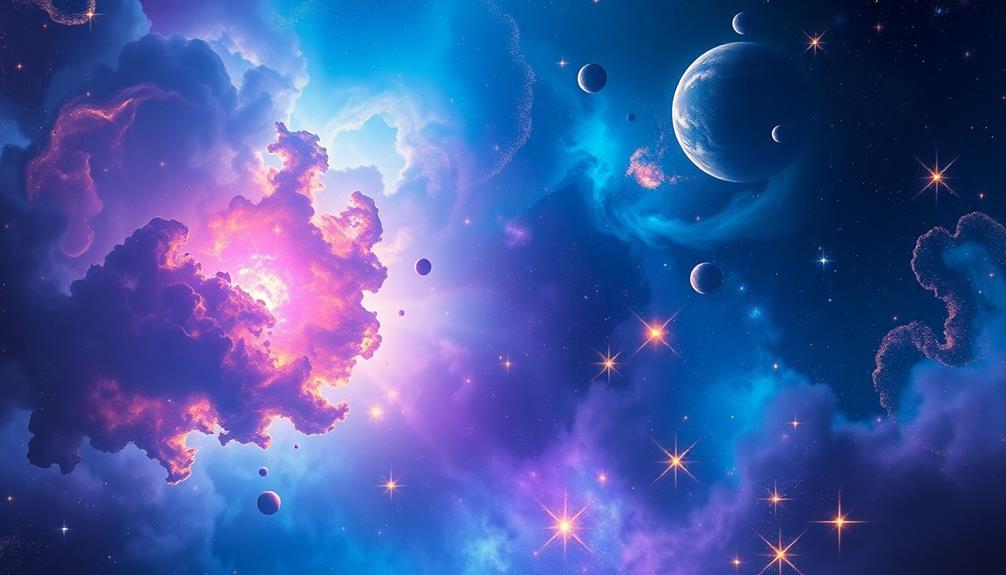
When you think about outer space, you might picture a vast, silent void, but astronauts who've ventured beyond our atmosphere tell a different story. They describe a surprising world filled with unique smells. Imagine stepping out into space and, when you come back, catching a whiff of burnt steak, ozone, and a hint of gunpowder!
These scents come from chemical reactions that happen in space. When astronauts float around, atomic oxygen and polycyclic aromatic hydrocarbons (PAHs) cling to their spacesuits.
Even though space is a vacuum and you can't smell anything directly while you're out there, the magic happens when you return to your spacecraft. That's when the smells are released, filling the cabin with a distinct aroma.
Some celestial bodies, like comets and interstellar clouds, also add their own special scents, making the olfactory experience of space even more fascinating.
To help astronauts train for this adventure, NASA created a fragrance called "Eau de Space." It's designed to mimic those amazing smells, allowing you to feel a little bit closer to the wonders of outer space. Isn't that exciting?
Description of the Smell
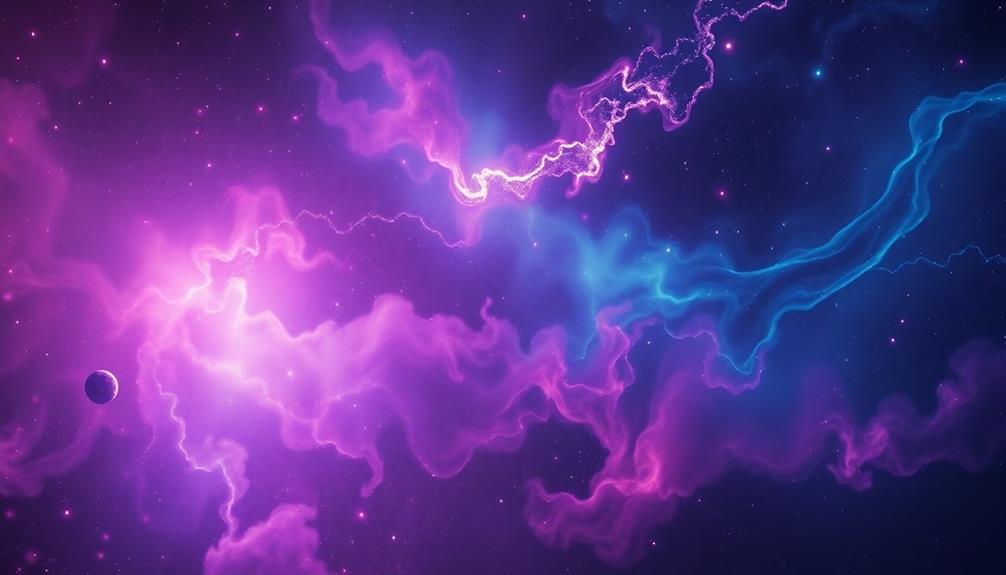
Stepping back into the spacecraft after a spacewalk, astronauts often find themselves enveloped in a blend of intriguing odors that defy expectations. They describe the smell of outer space as something quite surprising. Imagine the scent of burnt steak mixed with hot metal and a hint of spent gunpowder. It's a unique experience!
This distinctive odor comes from atomic oxygen that sticks to their spacesuits. When it reacts with atmospheric oxygen, it creates ozone, adding to that smoky scent. Some astronauts even say it reminds them of burnt almond cookies!
But that's not all. Polycyclic aromatic hydrocarbons, or PAHs, produced by stellar explosions, give off a similar grilled aroma.
And let's not forget about comet 67P/Churyumov-Gerasimenko, which releases a mix of rotten eggs, urine, and pickles, showing just how diverse smells can be in space.
These olfactory experiences vary from astronaut to astronaut, shaped by individual perceptions and the unique environments they encounter during missions.
Each sniff tells a story, revealing the wonders of outer space, and igniting curiosity about the universe we live in!
Source and Composition
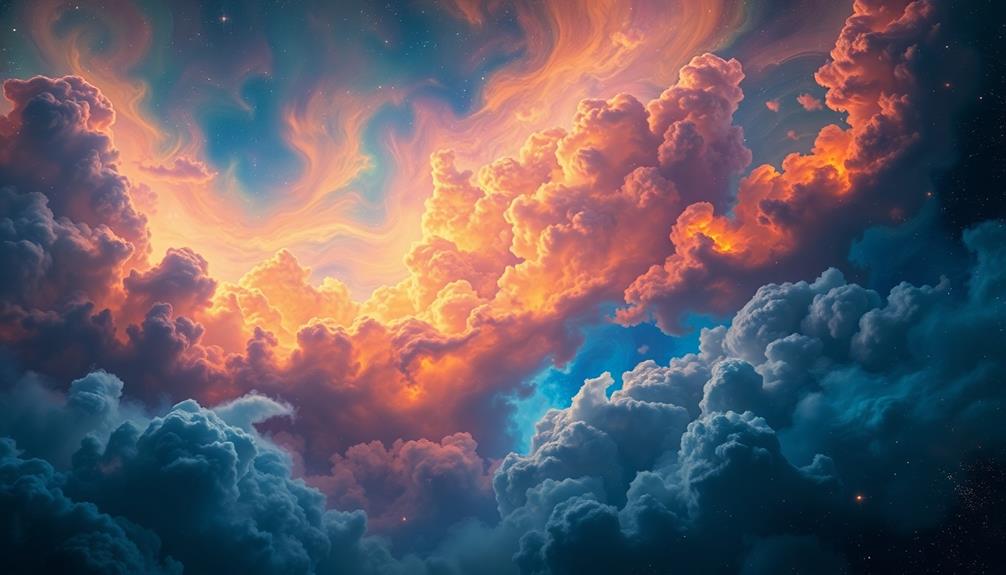
The smells encountered in outer space arise from a fascinating interplay of chemical reactions and compositions. When astronauts go on spacewalks, they notice distinct scents like burnt steak and gunpowder. These unique scents come from chemical reactions involving atomic oxygen and polycyclic aromatic hydrocarbons (PAHs) that cling to their suits. Isn't that interesting?
In different parts of space, the molecular makeup varies, leading to even more exciting smells! For example, Comet 67P has a mix of hydrogen sulfide and ammonia, which creates scents reminiscent of rotten eggs and pickles. Although these smells are faint, they add to space's charm.
Then there's Sagittarius B2, an interstellar cloud filled with alcohols that smell like raspberries and rum, which shows just how diverse space can be.
You can also find volatile organic compounds (VOCs) around celestial bodies like Saturn's moon Titan, giving off a gasoline-like odor due to hydrocarbons. Each region in space offers its own pleasant or strange scents, making the smells of outer space a truly unique experience to explore! Additionally, astronauts have reported that space itself has a distinct smell, often described as a mix of gunpowder, burned metal, and even barbecue after returning from spacewalks. The strange smells of Uranus, while harder to detect due to the planet’s distance and atmospheric composition, are believed to be particularly pungent, with high concentrations of hydrogen sulfide—reminiscent of rotten eggs. These interstellar aromas, though intriguing, remind us that each celestial location holds unique surprises beyond just visual wonders.
Typical Scenarios or Environments
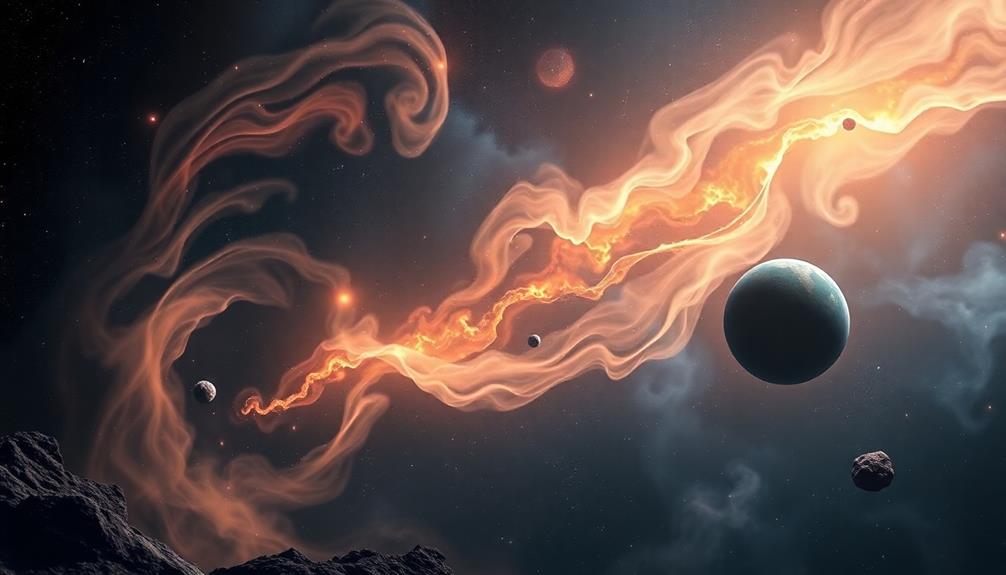
Experiencing the smells of outer space often hinges on specific scenarios or environments that astronauts encounter during missions.
When astronauts return from thrilling spacewalks, they often notice unique odors in the airlocks. These smells can remind them of burnt steak, hot metal, or even gunpowder! This mix comes from chemical reactions involving atomic and molecular oxygen.
In these moments, astronauts might catch whiffs of ozone, which has a sharp scent, alongside sweet-smelling welding fumes. It's fascinating how different cosmic environments create such diverse experiences!
For example, comets like 67P give off scents that evoke rotten eggs and pickles, thanks to hydrogen sulfide and ammonia.
Even the Sagittarius B2 interstellar cloud near the Milky Way offers a delightful surprise with scents reminiscent of raspberries and rum.
This shows how the universe is full of unique odors, each tied to its own environment. Whether soaring through space or stepping back into airlocks, astronauts are treated to a sensory adventure unlike anything on Earth.
The smells of space are as varied and exciting as the cosmos itself!
Emotional or Cultural Associations
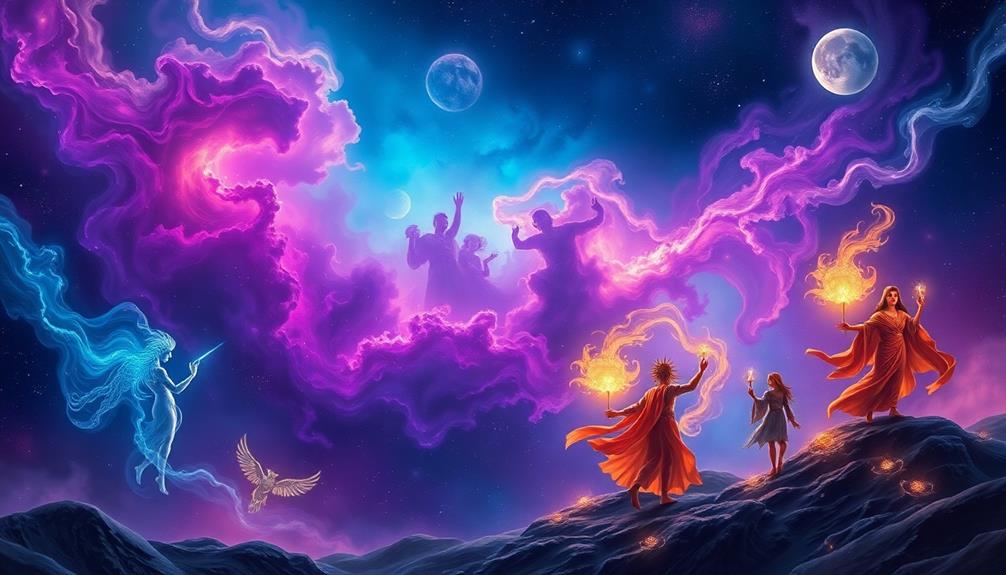
For many, the scent of outer space sparks a sense of wonder and curiosity that transcends scientific exploration. When astronauts describe space smells—like burnt steak or welding fumes—they share distinct odors that create a shared narrative about what it's like up there. This emotional connection draws you in, making you feel like a part of something bigger.
Cultural fascination with space inspires products like Eau de Space, a perfume that lets you experience the unique smells of the cosmos. It's exciting to think that you can smell what astronauts have encountered! These scents also inspire artistic expressions in books and movies. They shape how we think about space as an adventurous, mysterious frontier.
The idea of space smells offers a tangible link to the unknown, stoking our curiosity and inviting us to dream. Whether it's through media portrayals that romanticize space exploration or the stories shared by astronauts, these scents help us connect emotionally to the universe.
Health or Safety Considerations

Space may be a realm of wonder, but it also presents significant health and safety challenges for astronauts. When they explore, they encounter unique space smells. Some of these odors, like ozone, could signal chemical hazards. That's why safety protocols are essential!
To keep air quality high, effective ventilation systems and filtration are crucial in spacecraft. These systems help remove harmful smells and ensure astronauts breathe clean air. Monitoring odors can also act as an early warning system for chemical leaks. If there's a problem, astronauts can respond quickly to protect their health.
Long-duration missions can impact astronauts' psychological health too. The unusual smells of space may cause stress or anxiety. To help with this, NASA has developed scent simulation technologies, like Eau de Space. This prepares astronauts for what to expect, making their missions more enjoyable.
Final Thoughts
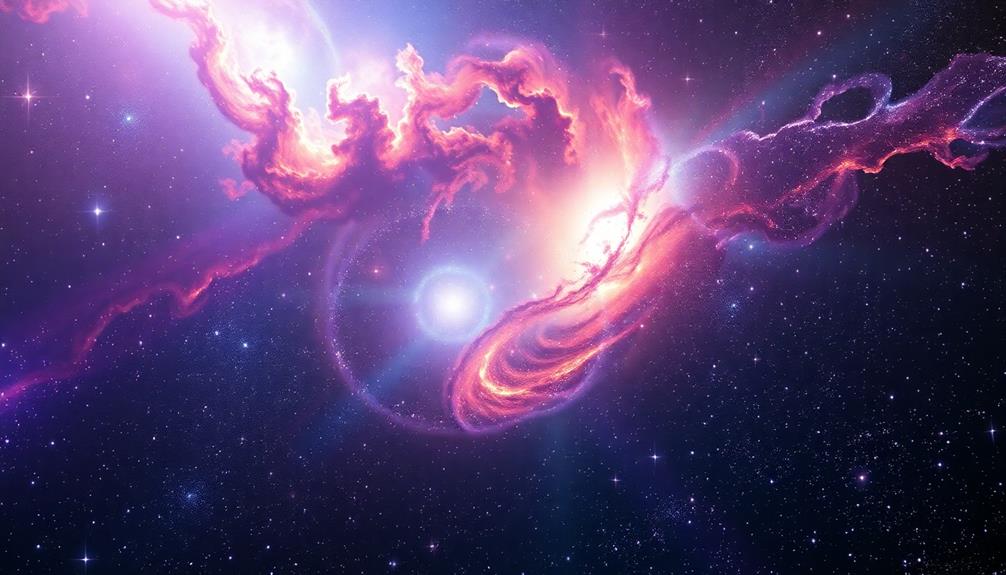
The intriguing smells of outer space offer more than just sensory experiences; they provide valuable insights into the cosmos. When astronauts return from their spacewalks, they often describe the smell of space as something like burnt steak, hot metal, or even gunpowder. These distinctive odors come from chemical reactions involving atomic oxygen and polycyclic aromatic hydrocarbons (PAHs) in the vacuum of space.
In the airlock environment, as astronauts re-pressurize, they notice these smells clinging to their suits. It's a fascinating reminder of their incredible journey.
To help everyone experience this, NASA even created the Eau de Space perfume! Although it might sound strange, this perfume captures the unique scents of space for training and education.
Understanding the smell of space doesn't just add to the adventure; it also gives us insights into the universe. Each scent tells a story about the chemical makeup of different regions in space.
Frequently Asked Questions
Does Outer Space Have an Odor?
You might wonder if outer space has an odor. While space is a vacuum, astronauts smell distinct scents upon re-entering spacecraft, like burnt steak and gunpowder, due to chemical reactions with their suits.
What Does Space Taste and Smell Like?
You might imagine space as tasting metallic, with hints of burnt flavors lingering in the air. While astronauts describe various odors, the experience varies, leaving you curious about the unique sensory encounters beyond Earth.
Does Space Smell Like Burnt Steak?
You might find that some astronauts describe space as smelling like burnt steak. This scent comes from chemical reactions in their suits, creating substances that can resemble burnt materials, like ozone or polycyclic aromatic hydrocarbons.
What Does Interstellar Space Smell Like?
In interstellar space, you'd encounter a mix of burnt odors from compounds like PAHs and sweet scents from alcohols. While you can't smell it directly, chemical analyses reveal a fascinating variety of cosmic aromas. Some regions of space are rich in complex molecules, such as ethyl formate, which is found in rum and gives raspberries their characteristic scent. This hints that certain parts of the galaxy might carry an aroma reminiscent of these earthly smells. You might even wonder if drifting through a molecular cloud could evoke familiar sensations, like recognizing what star anise smells like amidst the interstellar blend of chemicals.
